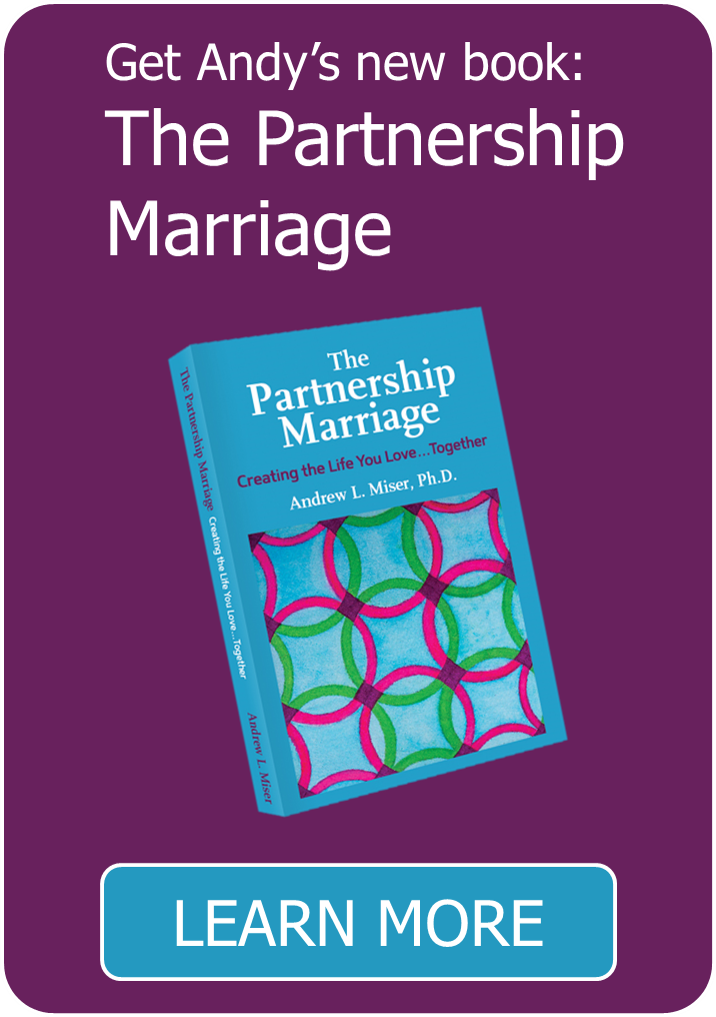Creating an Intentional Marriage
 Coontz (2005) writes that married couples today “need to be more intentional about their lives and about the reasons and the rituals that help them stay together.” Doherty (2001) suggests that there are two kinds of marital commitment: The tentative commitment and the permanent commitment. When couples make a tentative commitment, they are committed to be together as long as they make each other happy, as long as they trust each other and as long as they as they get their needs met. He refers to this kind of commitment as a “conditional” marriage. When couples make a permanent commitment, they are saying to each other, “I am committed no matter what.” In other words, there is no condition. There is no “as long as.”
Coontz (2005) writes that married couples today “need to be more intentional about their lives and about the reasons and the rituals that help them stay together.” Doherty (2001) suggests that there are two kinds of marital commitment: The tentative commitment and the permanent commitment. When couples make a tentative commitment, they are committed to be together as long as they make each other happy, as long as they trust each other and as long as they as they get their needs met. He refers to this kind of commitment as a “conditional” marriage. When couples make a permanent commitment, they are saying to each other, “I am committed no matter what.” In other words, there is no condition. There is no “as long as.”
Doherty (2001) suggests that there are three aspects of an intentional marriage:
- First, an intentional marriage requires having the steadfast commitment of both individuals to their marriage. Couples must make their relationship a top priority and focus on the quality of life they intend to create together. This requires being in constant communication with each other around day-to-day activity, sharing with each other about what’s important in their lives, talking about the future they envision together and creating plans and projects to fulfill the future they want for themselves.
- Second, an intentional marriage requires having many shared activities in the marriage for connection, intimacy and conversation. Doherty (2001) suggests that, in an intentional marriage, couples find ways to foster their commitment to and connection with each other. Many couples repeatedly put their children or their careers first without investing the time and energy into their relationship. Over the long run, this can be detrimental to the quality of their marriage.
- Third, an intentional marriage requires having a community of family members and friends supporting one’s marriage. Couples who develop a network of mutual friends, who care for and stand for their relationship, create a supportive social community for their marriage. Couples, individually and collectively, find ways to contribute to their wider community through civic participation, educational pursuits, creative projects or spiritual endeavors.
Doherty (2001) suggests that one of the great benefits of an intentional marriage is that a couple can take the long view of their life together. This allows them to trust that they can overcome any obstacle, re-align their vision and goals as they need to, learn and grow together, care and accept each other and re-invent their marriage along the way. Intentional marriage, then, is more than just requiring a one-time commitment; it requires a commitment to the quality of one’s marriage day in and day out.
References
Coontz, S. (2005). Marriage, a history: How love conquered marriage. New York, New York: Penguin Books.
Doherty, W.J. (2001). Take back your marriage: Sticking together in a world that pulls us apart. New York: The Guilford Press.
Posted in Partnership Marriage
